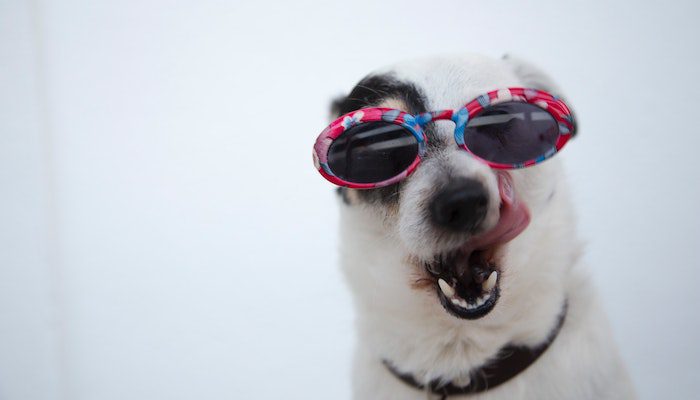Many people wonder if their dogs are color-blind or just not seeing colors. In reality, dogs have much better vision than humans, so it may be safe to say that they aren’t color blind, but this does not guarantee that they can see all colors. The ability of a dog to see specific colors depends on the dog’s breed as well as the individual genetics of the animal. For a dog to be considered color blind, it must be unable to differentiate between a specific number of colors or contrasts.
Dogs have color vision like humans and can differentiate green from red or blue. But they cannot distinguish between orange and yellow as humans do. They also cannot see shades of green, blue, or purple. A dog’s field of vision is also much narrower than a human’s, which makes it difficult for them to detect movement outside its wide range of vision. These dogs’ lack of color vision may have something to do with genes that vary from breed to breed or determine obedience versus aggression.
-
Key Information:
Several features are good indicators of the dog’s vision. The most significant hand is the size of the canine pupils, which increase in size when they see something they find exciting or when they are afraid or stressed. When dogs are calm, their eyes look similar to humans, with tiny pupils that constrict while focusing on something or when they look at something brightly lit (like a human would do). When dogs fight or are frightened, their pupils become more prominent, and their vision becomes blurry. Dogs generally have good night vision ability and can see better in the dark than humans. Many people cannot see as well as a dog does in darkness.
-
Are Dogs Color Blind?
Since dogs can see their surroundings differently, it is hard to understand why this question would arise. Not all dogs are color blind, but some remain entirely unaware of colors. While some dogs cannot distinguish between green and blue, others may have difficulty discriminating between shades of black and white. It is why there are many breeds of dogs where the possibility of color blindness exists.
The more intelligent a breed is, the more likely it will have trouble distinguishing colors such as red or yellow. It may also coincide with the dog’s temperament and personality. For example, some breeds are more aggressive and, in this regard, may need help to identify differences in colors that are very similar to each other. However, they are still able to distinguish between colors. They can make out many colored objects and the shades associated with them. It is easier for these dogs to determine changes in shades of black and white than to tell the difference between green and blue, for instance.
-
Why Can’t Dogs See Like Humans?
It is hard to tell the root of this question because the problem may be in the eyes themselves. Dogs have a different color spectrum than humans, so since they use these senses very differently, they end up with different results regarding color vision. It means that dogs don’t see like humans and are not color blind.
It is also one of the main problems associated with dogs as pets. A dog’s genes aren’t the same as a human’s or an animal’s, and therefore their ability to recognize colors and in which way would differ significantly from another species trying to distinguish shades of light instead of seeing them. The most common cases of color blindness are those associated with the dog’s inability to distinguish between red, green, and yellow. It is said that dogs can see their coloring in a mirror or at least dark or light shades of brown. However, a blue or green dog may also have a hard time seeing its reflection in the mirror because it will need clarification on the fact that it isn’t them.
-
Can Dogs See in the Dark?
Dogs are nocturnal, coming to life when humans go to bed and vice versa. However, most dogs are active at night, with a tiny group of animals in tip-top shape at any time of the day. The myth that dogs can see in the dark is that they were bred to hunt at night. And be more active during nighttime than in the daytime. However, their eyes are not specially built for this type of vision, making them unable to see shades of colors in dark situations. The myth about dogs being able to see colors in the dark comes from their sense of smell, which is much better developed than humans ever realized.
The color spectrum does not limit a dog’s sense of smell but is somewhat independent of the color spectrum (as long as there is a scent). Dogs are very good at tracking scents and can see in the dark because their eyes and nose are together. However, they can still distinguish colors in darkness. Some dogs can perceive colors in the dark, but it does not mean that they see in shades of light themselves. For a dog to be able to see in the dark, he needs to be an earlier hunter than humans, so these dogs may appear to be more active during nighttime than during daytime.
-
How Accurate is a Dog’s Eyesight?
A dog’s eyes are meant to hunt and help the canine species in their early role as hunters. However, dogs can also be used for other things, such as guarding, search and rescue, or even simple companionship. The immediate sense of their eyes is a small place near the mouth’s roof. Their secondary purpose is hearing, and their primary means of communication is body language. Therefore, the vision of a dog could be more precise. It isn’t that dogs can’t see well; it’s just that they see differently than humans do.
The wild ancestors of these pets were predators, and they didn’t have to worry about seeing every detail in an object or its shades like domesticated animals do. So, for example, a wolf will interpret the shades of red and green very differently than a domestic pet does. But the primary sense a dog is born with is its sense of smell, which is what it will rely on for many things in life.
-
Why Do Dogs Have a Wider Peripheral Vision?
The human eye is tiny compared to the dog’s eyes. The human retina is very small in itself, and the cones that bring light to the eye are located near each other. But this doesn’t mean that the dog’s eyes are different from a human one; they are smaller. It means that dogs have a broader peripheral vision, allowing them to spot prey from long distances.
This more extensive area of view also means that dogs have a better chance of seeing what is happening on different sides of their head than humans do. It is because dogs have a complete sense of hearing, which helps them see at night much better than humans. It is also why some dogs have a more challenging time hearing certain sounds when they are in an area with more than one dog barking simultaneously. Finally, this sense of smell is essential to dogs and helps them cope in situations without sight.
-
How Do Dogs See Color?
A dog’s vision is not different from a human one; it is much less developed than ours. Everything that dogs can see is already in the color spectrum, and this means that the colors aren’t “black,” “white,” and “red” for dogs but rather more like shades of gray. It means that there is no other color for dogs to distinguish between green, blue or red. These colors are similar to black and white in humans but are slightly darker.
The main difference is that dogs can’t distinguish between colors, unlike humans, who can. Dogs can only differentiate between shades of gray, but they don’t know if something is red or green, which makes it harder for them to recognize colors in an object when there are a lot of greens and grays around them. A dog’s vision is very different from a human’s and isn’t color blind. It just lacks some of the colored cones that our eyes possess. Dogs can only distinguish shades of gray, mainly when they are used to almost always seeing the same shadows in everything around them.
-
Why Do Dogs Have Good Night vision?
One of the biggest myths about dogs is that they don’t have good night vision because their eyes aren’t as good as humans. But this seems wrong because dogs have excellent night vision, which works better than many cats. Many cats cannot see at night and therefore have a problem detecting prey or predators at nighttime.
Conclusion:
Dogs have some of the most beneficial characteristics of all other canines, including the fact that they don’t have to worry about seeing colors in darkness. Dogs have a wide range of vision and can see far better than humans. They also have good night vision, which means that they are not only more energetic at nighttime than humans are, but also better equipped for night hunting as well.


































